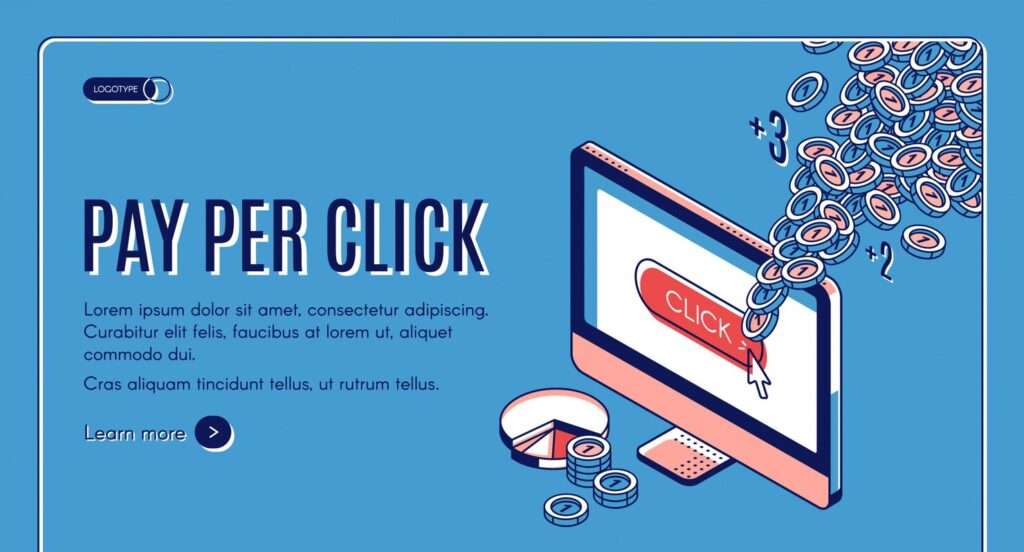Mastering PPC Landing Page Optimization for Maximum Conversion Rates

In the ever-evolving landscape of online advertising, Pay-Per-Click (PPC) campaigns have become a staple for businesses aiming to drive targeted traffic to their websites. However, the success of a PPC campaign is not solely dependent on crafting compelling ads; the effectiveness of the landing page plays a crucial role in converting clicks into valuable leads or customers. In this comprehensive guide, we’ll delve into the essential strategies to optimize your PPC landing pages for high conversion rates.
- Understanding Your Audience:
To create a landing page that resonates with your audience, it’s imperative to understand their needs, preferences, and pain points. Conduct thorough research on your target demographic, analyze their behavior, and tailor your landing page content to address their specific concerns.
- Crafting Irresistible Headlines:
The headline is the first element visitors notice, so it needs to be attention-grabbing and relevant to the ad copy. Use clear, concise language that conveys the unique value proposition of your product or service, enticing visitors to explore further.
- Compelling Visuals:
Humans are visual creatures, and a well-chosen image or video can significantly impact the first impression of your landing page. Ensure visuals are high-quality, relevant, and align with your brand identity. Use images that showcase your product or service in action and evoke the desired emotions.
- Consistent Messaging:
Maintain a seamless transition from the ad to the landing page by using consistent messaging. Ensure that the keywords, tone, and key points from your ad copy are mirrored on the landing page. This continuity reinforces the visitor’s confidence and connection with your brand.
- Clear Call-to-Action (CTA):
Your CTA is the linchpin of conversion. Make it highly visible, compelling, and action-oriented. Use contrasting colors to make the CTA button stand out, and employ persuasive language that encourages visitors to take the desired action, such as “Get Started,” “Subscribe Now,” or “Request a Demo.”
- Streamlined Forms:
If your landing page includes a form, keep it concise. Long forms can be a deterrent, leading to high bounce rates. Request only essential information and consider using multi-step forms to make the process feel less overwhelming.
- Compelling Copywriting:
Write persuasive, benefit-driven copy that speaks directly to your audience’s pain points and offers clear solutions. Break up text into digestible sections, use bullet points, and employ compelling language to keep visitors engaged.
- Social Proof and Trust Signals:
Incorporate customer testimonials, reviews, awards, or any other form of social proof to build trust. Highlighting positive experiences from previous customers can alleviate concerns and reinforce the credibility of your product or service.
- Mobile Optimization:
With the majority of internet users accessing content on mobile devices, ensure your landing page is fully optimized for mobile. Responsive design, fast loading times, and a user-friendly interface are essential for providing a seamless experience across devices.
- Page Loading Speed:
Users have little patience for slow-loading pages. Optimize your landing page for speed by compressing images, leveraging browser caching, and minimizing unnecessary scripts. A fast-loading page not only improves user experience but also positively impacts your ad quality score.
- A/B Testing:
Continuous improvement is key to optimization. Conduct A/B tests on various elements of your landing page, such as headlines, CTA buttons, images, and form lengths. Analyze the results to identify what resonates most with your audience and refine your page accordingly.
- Dynamic Keyword Insertion:
Customize your landing page content dynamically based on the user’s search query. This creates a more personalized experience, reinforcing the relevance of your landing page and increasing the likelihood of conversion.
- Exit-Intent Popups:
Implement exit-intent popups to capture leads from visitors who are about to leave your page. Offer special promotions, discounts, or additional content to entice users to stay and convert.
- Geo-Targeting:
If your business serves specific regions, leverage geo-targeting to create landing pages tailored to different locations. This enhances relevance and speaks directly to the needs of users in specific geographic areas.
- Continuous Monitoring and Optimization:
PPC and landing page optimization are ongoing processes. Regularly monitor performance metrics, such as conversion rates, bounce rates, and click-through rates. Use the insights gained to make data-driven adjustments and refine your landing page for ongoing success.
Conclusion:
In the competitive realm of PPC advertising, a well-optimized landing page is the linchpin to turning clicks into conversions. By understanding your audience, crafting compelling headlines, utilizing persuasive visuals, and implementing various optimization strategies, you can create a landing page that not only captures attention but also compels visitors to take the desired action. Continuous testing, analysis, and refinement will ensure that your PPC campaigns are not just driving traffic but delivering tangible results for your business.